The capital of the Republic of Sakha is the largest city located in permafrost conditions. Climate changes here are surprising: from -40 in winter to 40 during a short summer. Weather and terrain are important features of Yakutsk. In winter, there is only a few hours of light outside. In summer, you can observe the phenomenon of "white nights", which significantly lengthens the day. This, in turn, affects the rhythm of life of the local population.
The “Kingdom of Permafrost” and the Mammoth Museum clearly show guests how climate features can affect the soil and the preservation of ancient organisms. "Treasury of the Republic of Sakha (Yakutia)", which was previously available only to the elite, is now open to everyone who wants to get acquainted with the wealth of the region. It is also worth visiting the House of Archa and plunging into the culture of local peoples.
What to see and where to go in Yakutsk?
The most interesting and beautiful places for walking. Photos and a short description.
- The kingdom of permafrost
- Square of victory
- Lenin Square
- Monument in honor of the founding of Yakutsk
- Mammoth museum
- Treasury of the Republic of Sakha (Yakutia)
- Museum of the History and Culture of the Peoples of the North
- Museum and Khomus Center of the Peoples of the World
- National Art Museum
- Sakha Academic Theater named after P. A. Oyunsky
- Yakut Opera and Ballet Theater
- Russian Drama Theater
- Transfiguration Cathedral
- Archa's house
- Monument to Dezhnev and Abakayada
- Yakut zoo Ortho-Doidu
- Central Park of Culture and Leisure
- Viewpoint Chochur Muran
- Kuruluur waterfall
- Lena Pillars
"The kingdom of permafrost"
The tourist center has been operating since 2008. This attraction in the past was an adit near Chochur-Muran. The ice dungeon was used for food storage. The temperature in the cave is always minus. Tourists at the entrance are provided with equipment - felt boots and warm capes. There are several separate rooms inside. On their walls you can see how much the soil has frozen. There is a small museum.
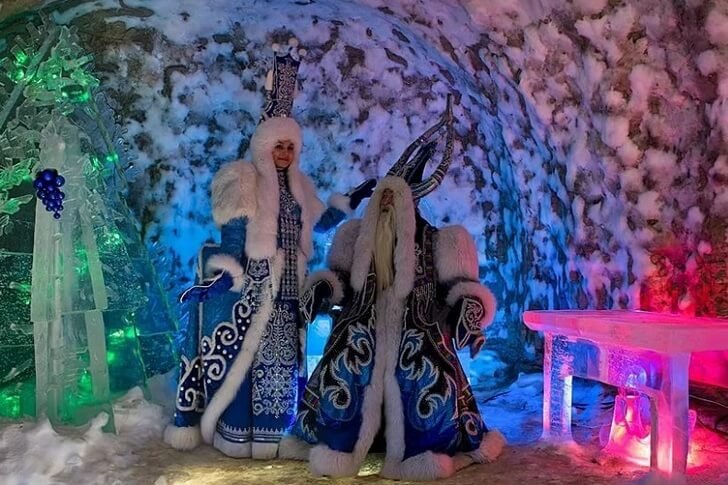
Square of victory
The square is famous for the memorial complex of the same name. It was opened in 1975. From this place, the inhabitants of the city went to the front. Ten years later, a soaring horseman was placed in the center of the composition. It resembles the hero of the national epic Nyurgun Bootur. During the reconstruction of 1995, a triumphal arch was installed on the square. In the warm season it is crowded, there are many leisure options within walking distance.

Lenin Square
Until 1957, Gostiny Dvor was located in this place. The buildings were demolished and the square, which received the name of the leader of the world proletariat, was smashed. Now fountains are installed on the square, along there is a chain of benches. In winter, slides are filled, and special lighting appears, ice figures are installed. On holidays, the square hosts fairs and other cultural events.
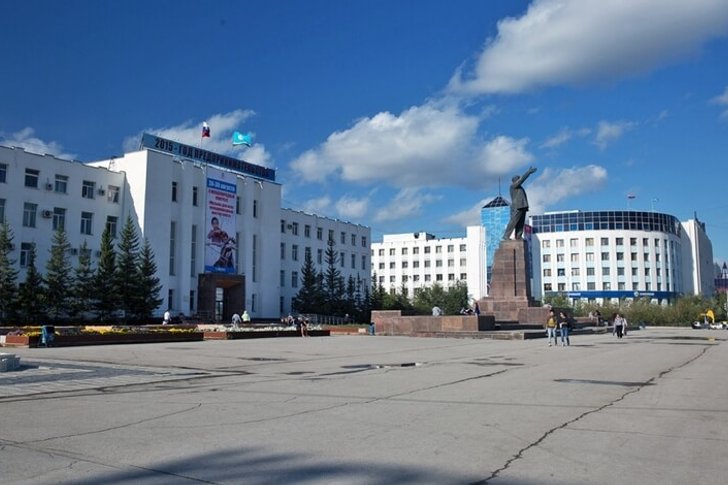
Monument in honor of the founding of Yakutsk
Installed in 2007. The foundation of Yakutsk in 1632 is also a countdown of the time when Sakha became part of Russia. A column stands on a four-sided high pedestal with arches. Its height is 33.4 meters. Since there are no buildings nearby, the monument looks even more impressive. Since there is a monument in front of it, and the area around it is fenced and located on a hill, a single composition is obtained.
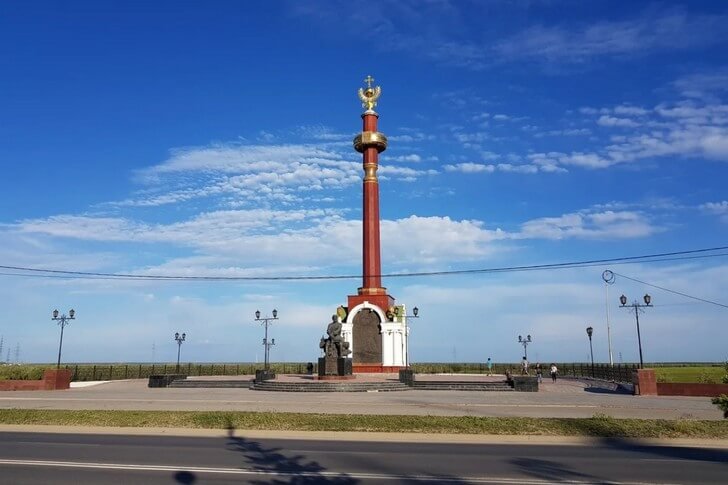
mammoth museum
The only museum of its kind in the world. Opened in 1991. Specializes in the storage, demonstration and study of the remains of mammoths and other paleontological finds. Environmental conditions, including permafrost, allowed the ancient inhabitants of our planet to be well preserved. For example, part of the exhibition is a mammoth, which has preserved many parts of the body, including skin cells.
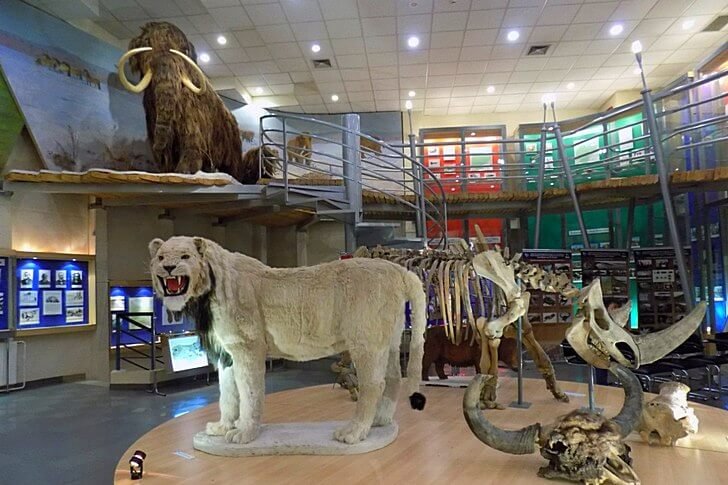
"Treasury of the Republic of Sakha (Yakutia)"
The first exhibition was organized in 1992 to preserve the wealth of Yakutia. The Republic is a leader in the extraction of a number of precious stones and metals, both in the country and in the world. The permanent exhibition appeared two years later. Being the Museum of Diamonds, the exhibition worked behind closed doors, only for high-ranking guests. Now the status of the institution has changed, as well as the name. Anyone can see the exhibits.

Museum of the History and Culture of the Peoples of the North
It has existed since 1891. Scattered exhibitions were brought together under one roof, and until 1978 the museum worked in the status of a local history museum. All exhibits are divided into 4 groups: archaeological, ethnographic, historical, natural. The museum has several buildings and branches. Exhibits: clothing, household items, tools, dioramas and photographs. The museum has a children's section and a science center.
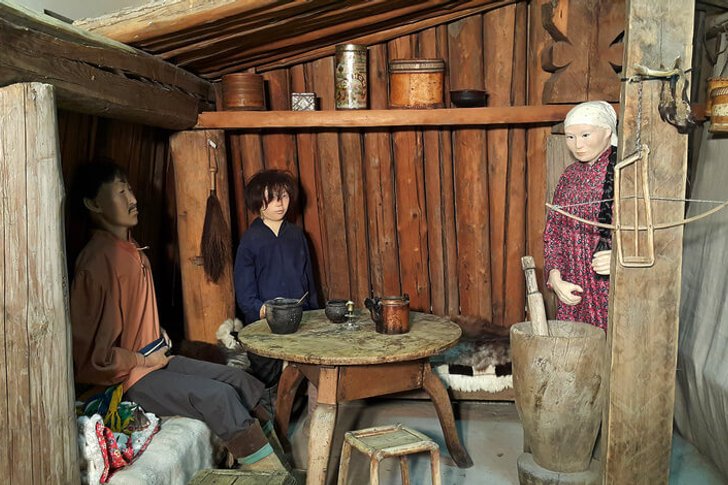
Museum and Khomus Center of the Peoples of the World
There is no other institution like it anywhere in the world. Khomus, or jew's harp, is a reed musical instrument. The doors of the museum were opened for visitors in 1990. The philologist Alekseev donated his collection of jew's harps to the city, and the current exposition was formed on its basis. The exhibitions tell about the khomuses of different peoples of the world, the rituals of shamans, and the peculiarities of using the instrument in different cultures.

National Art Museum
One of the largest art museums in the northeast of the country. Has a rich collection of paintings. The collection has been formed since 1928. Particularly valuable canvases belong to the brushes of Levitan and Korovin. Now among the 12 thousand exhibits you can find not only masterpieces of world significance, but also paintings by local artists. Several exhibitions have been allocated for them, including "Graphics of Yakutia".
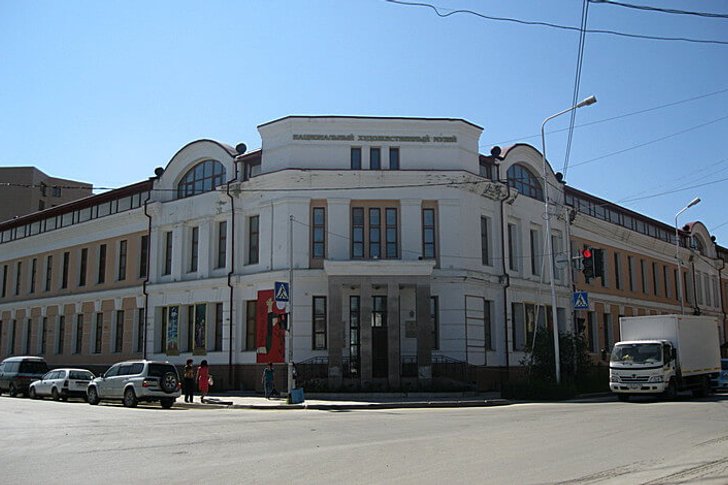
Sakha Academic Theater named after P. A. Oyunsky
Founded in 1920. There were 2 troupes: one staged performances in Russian, the second in the Sakha language. They split up 5 years later. Since 1934, the theater has been named after the playwright and poet Oyunsky. The building is modern, the hall is designed for about 400 seats. Although the performances use only the Sakha language, they stage not only works by Yakut authors, but also translated classics.
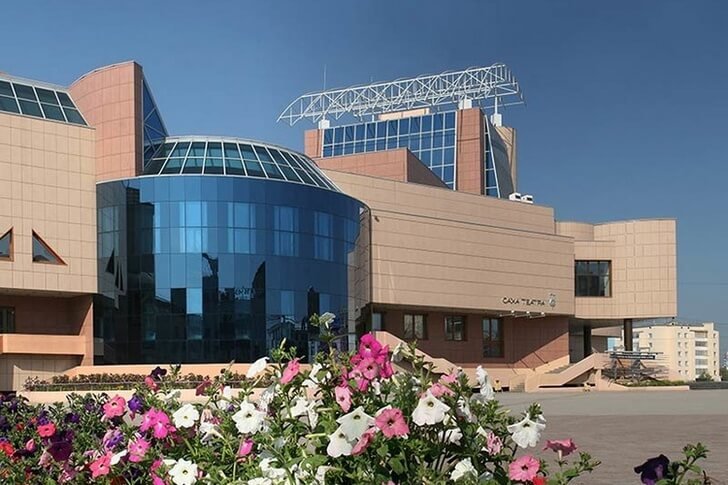
Yakut Opera and Ballet Theater
The northernmost of such cultural sites in Russia. Formation began in the 30s of the last century. Initially, it was a musical and vocal group that gave performances at several venues in the city. The troupe took shape by the end of the 40s and had the status of a studio theater. XXI brought the theater the "Golden Mask" and a place in the 1000 best institutions of the country in the field of culture and art.
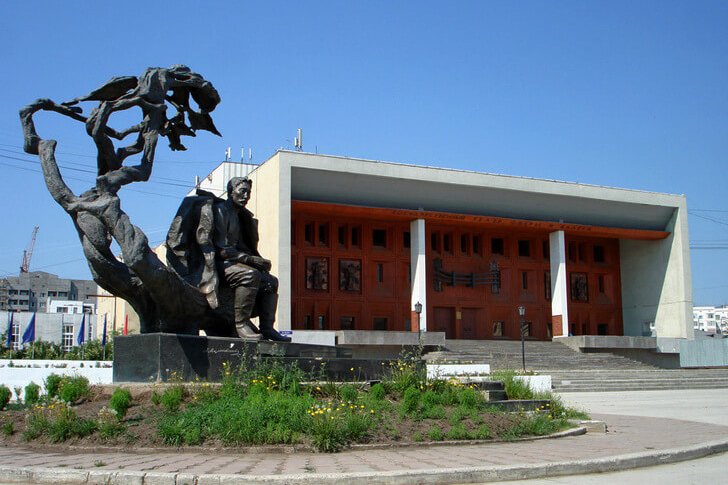
Russian Drama Theater
The troupe was formed at the end of the century before last on the basis of a creative circle. The audience saw the first performance "In a Busy Place" in 1892. Of the repertory theater is the first in Yakutia and the oldest in the entire northeast Asian region. Currently bears the name of Pushkin. The material for productions is domestic and world classics. The genres are different, but drama and comedy are preferred.
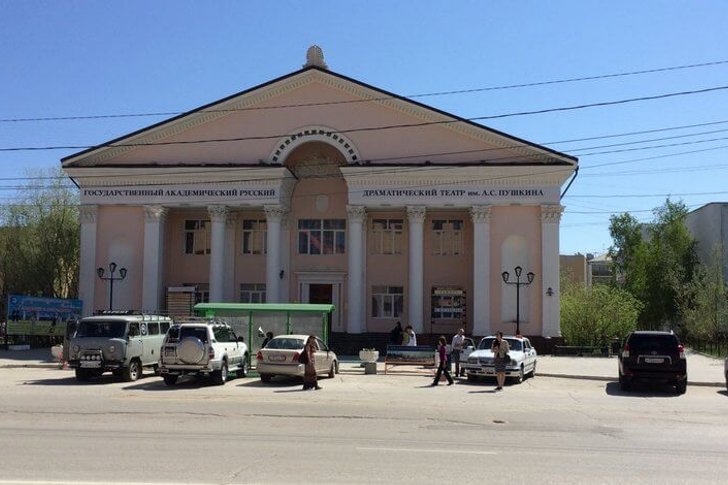
Transfiguration Cathedral
The oldest of the working Orthodox churches in the city. Construction took place in the first half of the 19th century; merchants paid for the work. The decoration was rich, the icons were placed in decorated carved frames. Part of this splendor was lost in the 30s of the last century. The reopening after restoration took place in 1994. Time and repairs somewhat changed the initial appearance of the cathedral.
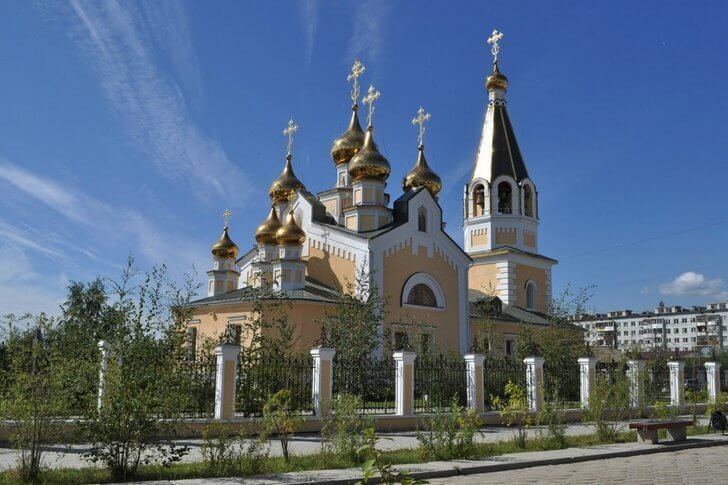
Archa's house
Spiritual center of the Yakut people. Allows you to get acquainted with the traditions, culture and religion of local peoples. The building is stylized as a tent and refers to the national characteristics of the Yakuts. Tourists are offered to watch the rituals performed by a real shaman. You can participate in some of them and receive, for example, a blessing from the spirits. The ceremonies are colorful with a bunch of paraphernalia.

Monument to Dezhnev and Abakayada
The composition depicts a married couple - a symbol of the unity of Russia and Yakutia. Dezhnev is a pioneer who studied these lands. Abakayada is a local resident who became his companion, including at work. The opening of the monument took place in 2005 shortly before the 15th anniversary of the signing of the declaration of sovereignty of Yakutia. Yakut masters worked on the project, but it was made in St. Petersburg.
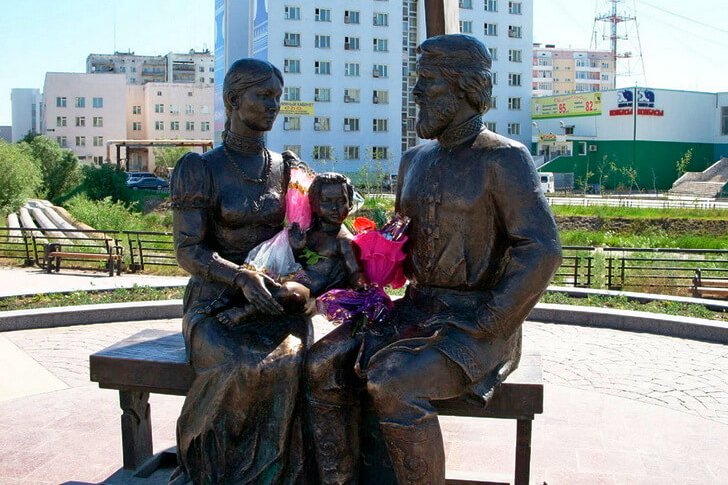
Yakut zoo "Ortho-Doidu"
Organized in 2001. There is no other zoo in the world that operates at such low temperatures. The area of the territory is 92 hectares. There are about 300 pets representing 131 species. The zoo has everything you need to help wild animals in trouble, as well as a place for their recovery after treatment. The attraction is visited by about 35 thousand people a year.
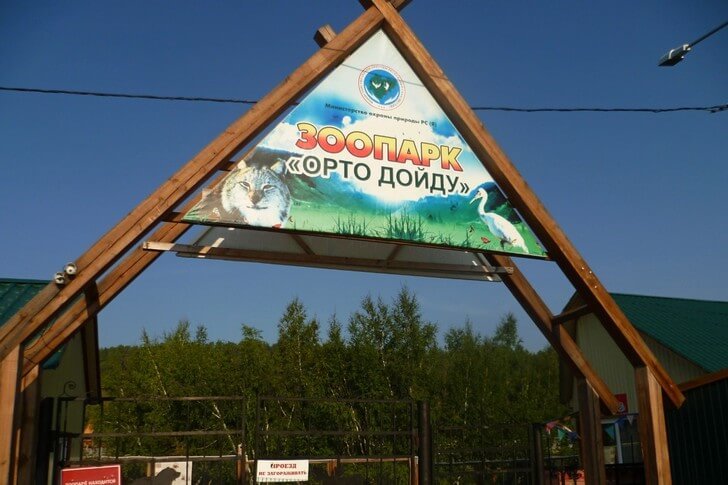
Central Park of Culture and Leisure
Created in stages since 1935. At first it was part of a forest area, which was surrounded by a wooden fence and several sites were cleared on it. Gradually, alleys, paths, monuments, a summer scene, opportunities for outdoor activities, attractions appeared. After the war, a closed theater and a dance floor worked here. Since 1994, the park has been classified as a specially protected area.

Viewpoint Chochur Muran
It opened in 2014 on the highest hill in the city. This observation deck was the first in Yakutsk. Log benches were installed on the site with wooden flooring and fences. From here you can see the surroundings from a height of about 200 meters. A particularly impressive view opens up to the Tuymaada valley. The attraction is part of the "Vilyui Triangle" - a tourist and recreational cluster.
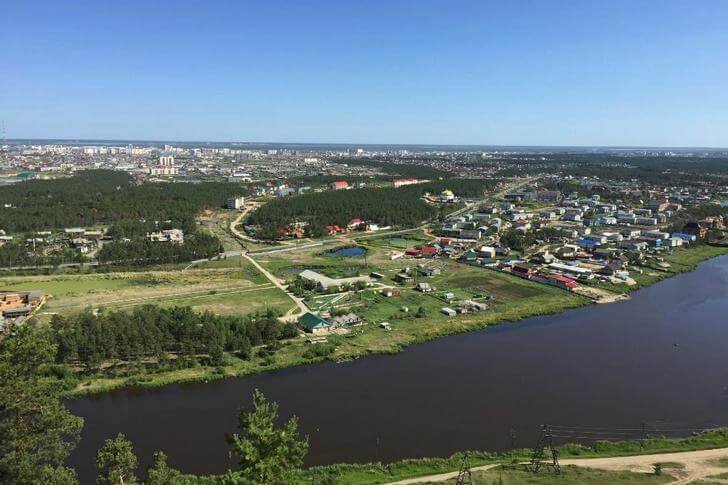
Kuruluur waterfall
A whole complex of waterfalls is located 110 km from Yakutsk. Formed on the Menda River. Although the natural zone is protected by the state, it was leased to private owners. Places for recreation are organized around, and cleanliness is closely monitored. Gazebos have been installed, drawing lessons are held in the bosom of nature. Often a visit to Kuruluur during sightseeing tours is combined with a visit to the Buluus glacier, which is 10 km away.
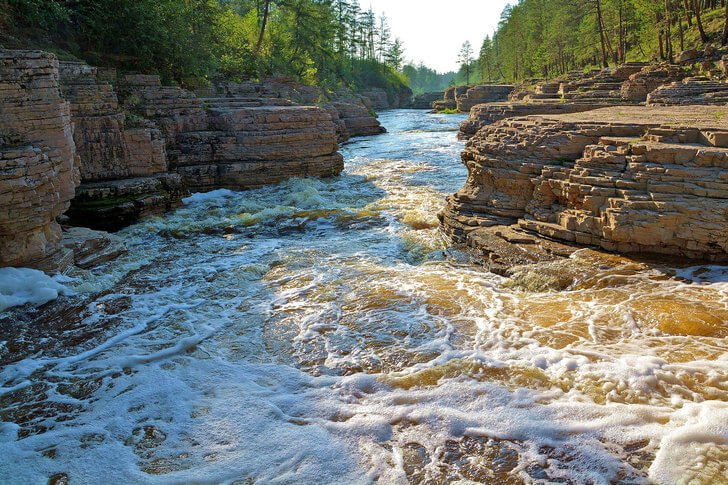
Lena Pillars
A complex of closely standing high rocks along the Lena coast. The geological formation is part of the natural park of the same name. The area of the Lena Pillars is approximately 4800 km². The natural monument was formed about 550 million years ago. The park was founded in 2012 and covers an area of 1.38 million hectares. Late Neolithic burials, permafrost ecosystems and fossilized remains of ancient fauna have been found here.
